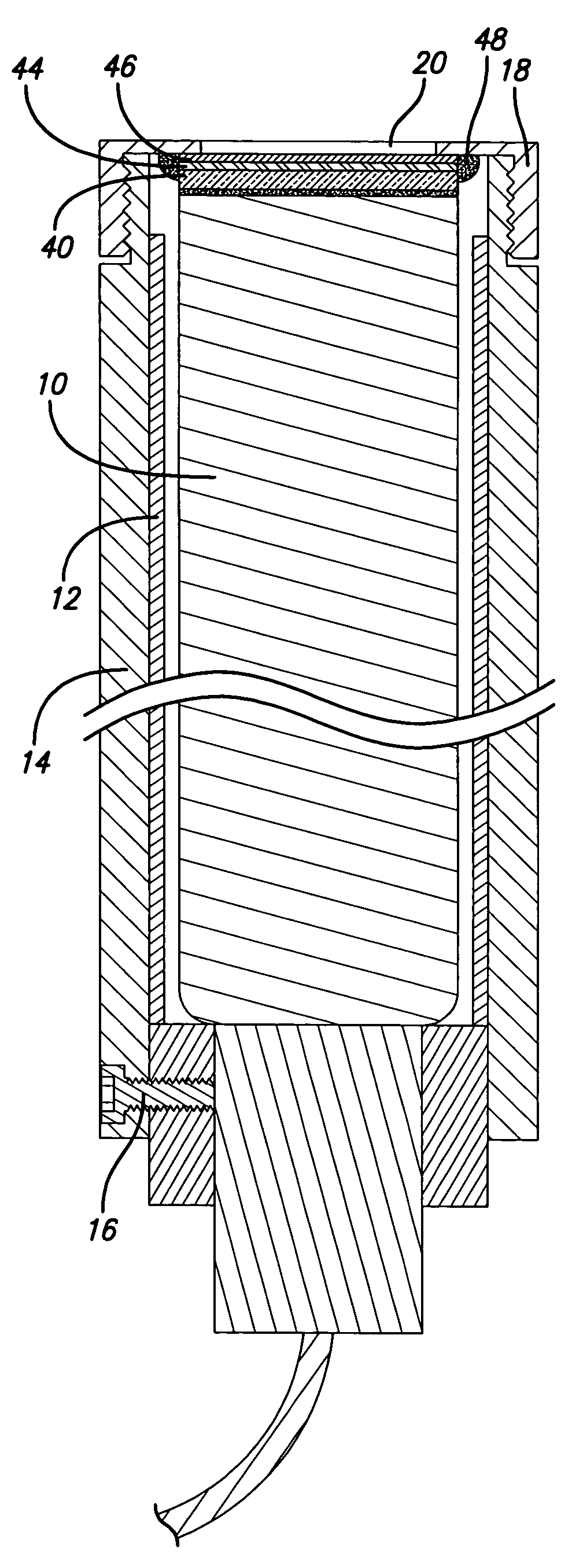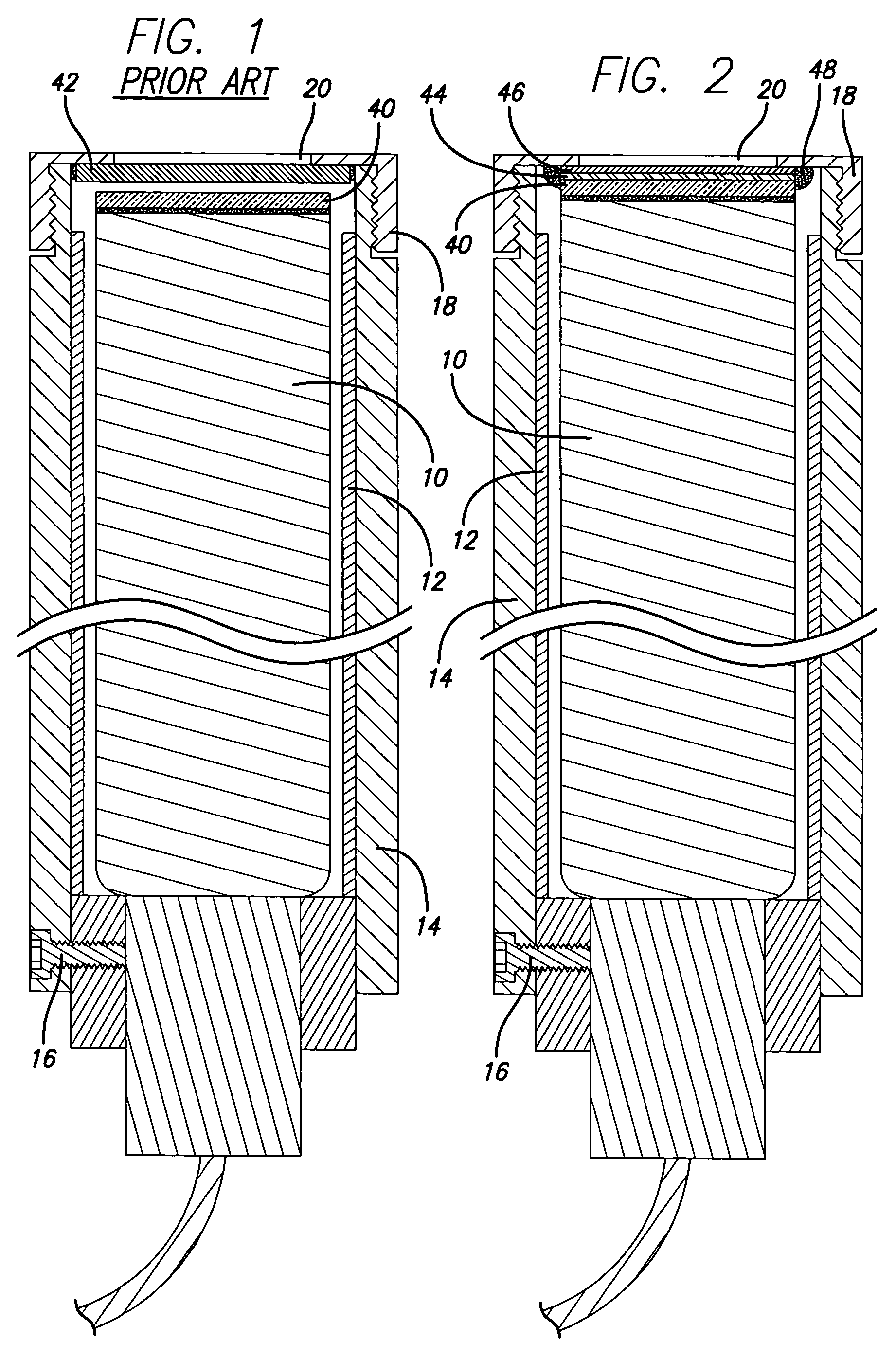Low threshold level radiation detector
a radiation detector and low threshold technology, applied in the direction of radiation measurement, instruments, measurement devices, etc., can solve the problems of inability to detect electrical signals, inability to accurately measure radiation, and inability to provide detectable electrical signals, etc., to achieve more accurate readings, reduce the detection threshold, and improve the effect of detection accuracy
- Summary
- Abstract
- Description
- Claims
- Application Information
AI Technical Summary
Benefits of technology
Problems solved by technology
Method used
Image
Examples
Embodiment Construction
[0018]The present invention is directed to a low threshold level radiation detector in which a thin layer of protective covering is directly applied to a radiation detector surface without a window cover to allow detection of low levels of radiation. The present invention improves existing radiation detectors by allowing a lower detectable threshold and readings that are more accurate. The attenuation of low-level radiation by structural window cover material used in typical radiation detectors is reduced when the window cover is not present. The radiation detector of the present invention, therefore, is capable of measuring lower energy or lower levels of radiation more accurately than known radiation detectors.
[0019]As mentioned, current radiation detectors use structural material or window covers to cover radiation detector components. The window cover serves three necessary purposes: blocking ambient light from entering the radiation detector, focusing scintillated light into th...
PUM
 Login to View More
Login to View More Abstract
Description
Claims
Application Information
 Login to View More
Login to View More - R&D
- Intellectual Property
- Life Sciences
- Materials
- Tech Scout
- Unparalleled Data Quality
- Higher Quality Content
- 60% Fewer Hallucinations
Browse by: Latest US Patents, China's latest patents, Technical Efficacy Thesaurus, Application Domain, Technology Topic, Popular Technical Reports.
© 2025 PatSnap. All rights reserved.Legal|Privacy policy|Modern Slavery Act Transparency Statement|Sitemap|About US| Contact US: help@patsnap.com



